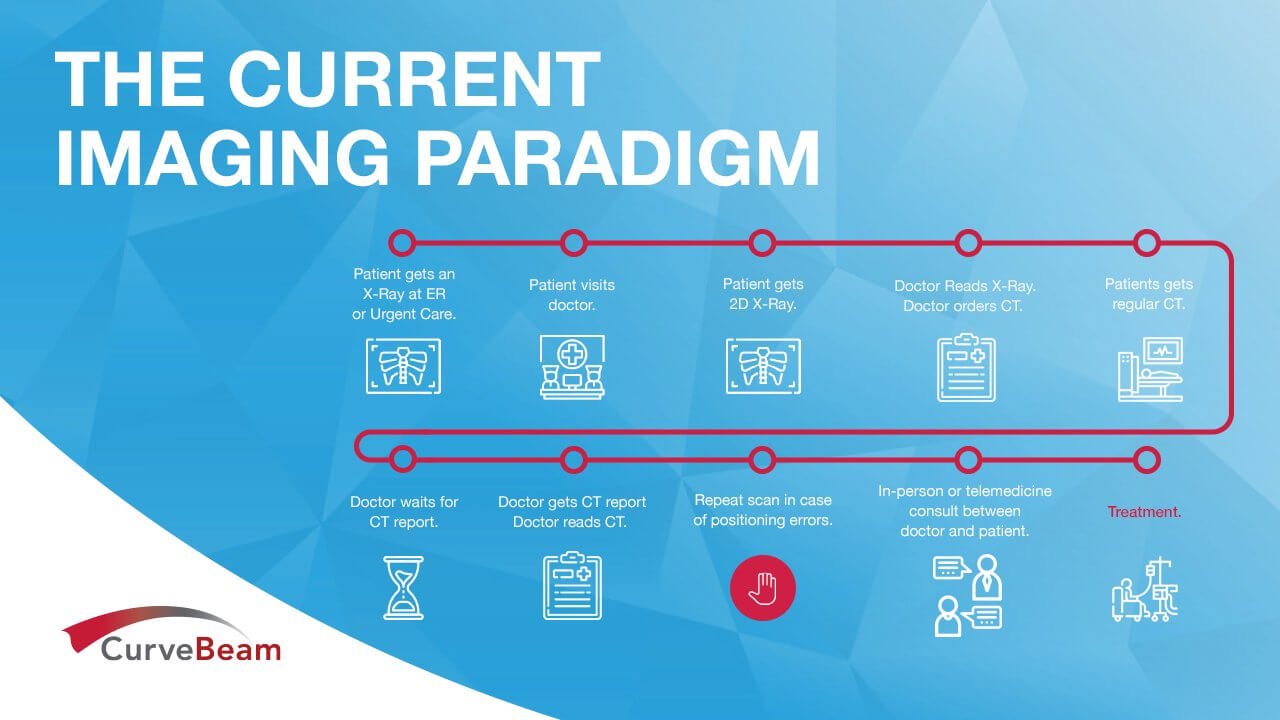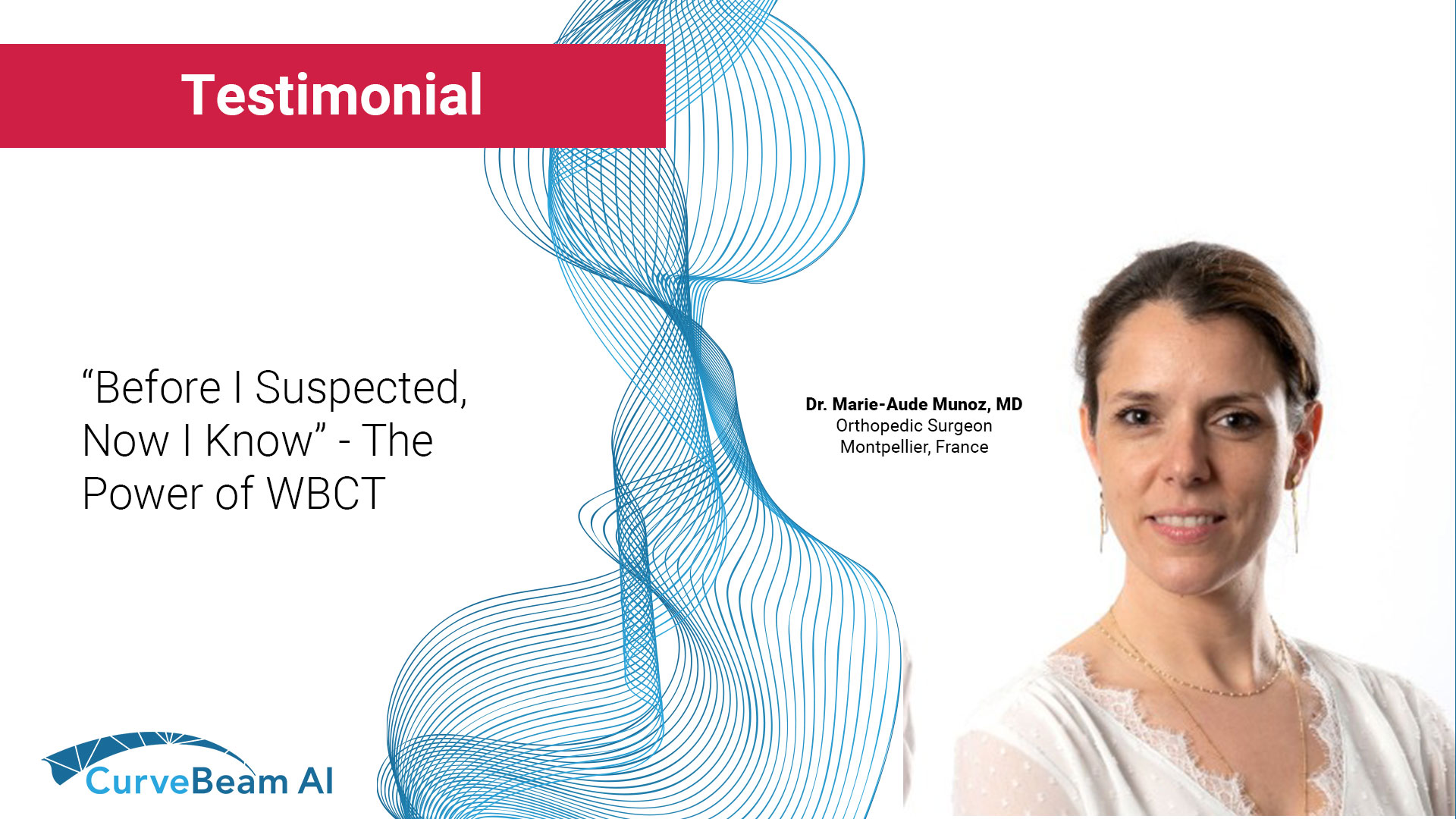At the forefront of orthopedic innovation, CurveBeam AI continues to push the boundaries of what’s…

Right Test, Right Time – Ensure Your Ortho Practice is the Right Place
Modern medicine has made some major advances. Procedures that used to require a three-day inpatient stay are now done in outpatient ASCs, and patients go home the same day. Surgeries that required large incisions are now minimally invasive or laparoscopic.
Orthopedic imaging for minor trauma is poised for the same transformation. Diagnoses that used to take several imaging exams to reach can now be reached after one.
In the current paradigm, a patient with minor trauma typically:
- Gets X-Rays at the ER or urgent care;
- Often gets another set of X-Rays at his follow-up visit with their orthopedic specialist. An X-Ray technologist might have to repeat parts or all of the exam if the desired view is not captured.
- X-Rays, although quick and accessible, often obscure or hide pathologies, so a patient may need an additional CT exam or MRI.
In this hypothetical, the patient underwent up to four X-Ray exams to get a conclusive answer on whether they have a fracture or other bone injury.
 Is your practice ready for the future of orthopedic imaging?
Is your practice ready for the future of orthopedic imaging?
New orthopedic extremity CT systems provide low dose 3D X-Rays that reveal bone and fracture detail in the first test. These systems are designed for the orthopedic setting. They plug into a standard wall outlet, require minimal shielding, can be operated by an RT(R), and expose the patient to virtually the same radiation as a standard X-Ray series. They don’t, however, compromise on image quality. In fact, they have higher spatial resolution than traditional medical CT scanners.
Click here to read how extremity CT imaging can reveal hairline and stress fractures that are missed on plain X-Ray.
Dedicated orthopedic CT systems can be sited at walk-in/ urgent care ortho practice locations. Fractures or other pathologies can be detected and more effectively triaged in the first encounter. The specialist following up will have a head start on developing a care plan.
Walk-in locations can further differentiate themselves from local emergency departments and start playing a critical role in preventing leakage.
Click here to download a casebook of clinical examples in which in-office CT found pathology that X-Ray exams missed.




